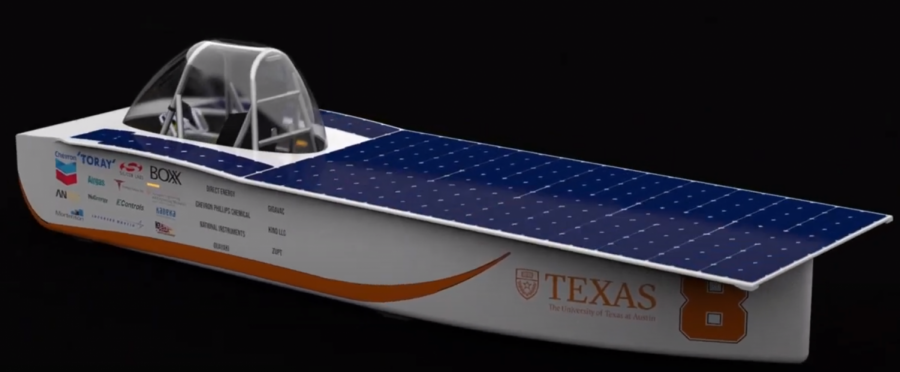Longhorn Racing showcases new generation of solar car
May 2, 2021
Longhorn Racing displayed the new generation of its solar car, designed by UT students, at its virtual annual showcase April 24.
Longhorn Racing is a UT organization composed of three different teams on which students build and race vehicles powered by combustion, electricity and solar power. This is the first entirely new design for the solar team in the last nine years, solar team captain Michael Wolf said.
Wolf said before the unveiling, the solar team worked on improving an older iteration of the solar car that was built in 2012. In 2017, the team tried to design a new solar vehicle but scrapped the idea due to the difficulty, Wolf said.
“A lot of man-hours have been spent on designing this car, a lot of man-hours will be spent on manufacturing this car and I’m really excited to see the finished project next year,” chemical engineering junior Wolf said.
Wolf said this year’s design is fully powered by energy from the sun through solar panels on top of the car, just like the 2012 version, but it has a new motor that allows them to drive more efficiently. The car will weigh 600 pounds, which is lighter than previous iterations, Wolf said. While past cars’ top speed was 20 miles per hour, the new car can drive up to 30 miles per hour, thanks to 260 solar cells that produce about 875 watts of power, Wolf said. That’s about as much power as it takes to run a microwave, Wolf said.
Longhorn Racing president Kevin Mechler said the solar team is encouraged to reuse and modify the vehicle every year because of the expenses associated with building a completely new solar car.
“The cost of the solar car is two or three times the cost of any of our other cars,” said Mechler, an electrical and computer engineering junior. “The solar panels are expensive — we have to make those, and it takes a long time to make them.”
Chase Block, the solar team’s chief engineer, said they are emphasizing building different parts of the car from the ground up, allowing for more flexibility in the design and a better learning experience.
“Previously, the team would use some systems that we purchased from companies to operate,” said Block, an electrical and computer engineering junior. “There’s a lot of complicated circuitry that goes into using solar cells and solar panels.”
Block said work on the vehicle became more difficult when the COVID-19 pandemic forced the team to collaborate virtually. Now that the team is working on the car in person, they have limited time to work because the J.J. Pickle Research Campus’ COVID-19 restrictions don’t allow them access during weekdays, Block said.
“We have a lot of members not in Austin anymore and some not in America, which has definitely thrown a wrench into some of the productivity that we can accomplish as a team,” Block said. “There’s a lot of work that people can do virtually with the design, (but) there’s significantly less that people can do virtually when you get to manufacturing.”
Wolf said the vehicle will be raced in the Formula Sun Grand Prix, an annual solar-car race that includes a track race and a cross country race. Block said the team finished designing the solar car in December and is currently working on manufacturing the vehicle by next spring. The team plans to race with the solar car in summer 2022.



